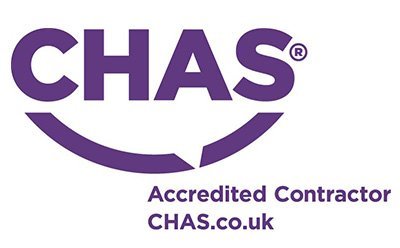Electrical maintenance is the practice of ensuring the safety, efficiency, and reliability of electrical systems in homes, businesses, and industrial facilities. It goes beyond simply fixing faults; it involves proactive care to extend system longevity, prevent unexpected failures, and ensure compliance with regulations. Proper electrical maintenance safeguards people, property, and equipment while keeping systems running efficiently.
Electrical systems are critical to modern life, powering everything from household appliances to industrial machinery. Without regular maintenance, these systems can degrade, leading to safety hazards, energy inefficiency, and unexpected downtime. Electrical maintenance is the key to managing these risks and ensuring consistent performance. In the UK, property owners have legal responsibilities under the Electricity at Work Regulations 1989, which makes routine care not just a recommendation but a legal requirement.
Why Electrical Maintenance Matters
Proper electrical maintenance supports safety, efficiency, and sustainability. Scheduled inspections and proactive care help prevent electrical fires, reduce energy consumption, and identify minor issues before they escalate. In addition, a well-maintained system contributes to sustainability by optimising energy use and reducing waste, making it an environmentally responsible choice.
Electrical maintenance can take several forms, each serving a specific purpose:
Preventive Maintenance
Preventive maintenance involves routine checks and scheduled inspections designed to keep electrical systems in good working order. This includes testing circuit breakers, inspecting wiring, and verifying that all components meet safety standards. By catching potential problems early, preventive maintenance reduces the risk of downtime and costly repairs.
Predictive Maintenance
Predictive maintenance uses data-driven monitoring and analysis to anticipate potential failures. Sensors, performance tracking, and historical data help predict where issues may occur, allowing property owners to address them before they disrupt operations. Predictive maintenance is especially valuable in industrial or commercial settings, but it can also be applied to residential systems for long-term peace of mind.
Corrective Maintenance
Corrective maintenance is the reactive approach, where technicians fix problems after they occur. While necessary in some cases, relying solely on corrective maintenance can be expensive and risky. Combining corrective measures with preventive and predictive strategies ensures a more reliable and cost-effective solution.
Why Every Property Owner Should Care
Electrical maintenance is not just for large buildings or commercial properties. Even small homes benefit from scheduled inspections and maintenance. Compliance with UK laws, such as the Electricity at Work Regulations 1989, is essential for insurance validity and tenant safety. By investing in electrical maintenance, homeowners and businesses can protect their property, reduce energy costs, and ensure a safer environment.
Contact us today to book a consultation or schedule a service and keep your systems running smoothly.
Typical Processing Times – What to Expect
When it comes to maintaining safe and reliable electrical systems, understanding typical processing times for various procedures is essential. Proper timing ensures that tasks like inspections, testing, and upgrades are completed efficiently without compromising safety or compliance. Knowing what to expect allows homeowners and businesses to plan effectively, whether scheduling routine checks or addressing emerging issues.
Processing times can vary widely depending on the complexity of the work, the completeness of submitted documentation, and even the current volume of requests.
The Core Processes: Inspections, PAT Testing, Thermal Imaging, Circuit Verification, Earthing, and Isolation Tests
Each of these essential processes plays a crucial role in keeping electrical systems safe and efficient.
Inspections
Regular inspections are the foundation of both preventive maintenance and predictive maintenance strategies. They help identify potential hazards before they develop into serious issues. Depending on the size and complexity of a system, inspections can take anywhere from a couple of hours to a few days. Larger sites with extensive wiring may require additional planning to ensure minimal disruption.
PAT Testing
Portable Appliance Testing (PAT) ensures that plug-in devices operate safely. This process is relatively quick for smaller setups, but larger commercial or industrial environments may take longer to complete due to the sheer number of devices. Accurate documentation during PAT testing can significantly reduce delays in subsequent maintenance cycles.
Thermal Imaging
Infrared thermography identifies hot spots or electrical anomalies that are not visible to the naked eye. While the scanning itself is quick, interpreting results and planning corrective action may extend processing time, particularly if multiple systems require assessment.
Circuit Verification, Earthing, and Isolation Tests
These steps verify that circuits operate as intended and that earthing and isolation measures meet safety standards. The complexity of circuits and system interconnections can impact how long each test takes, but thoroughness is always prioritised over speed for the sake of safety.
Key Tools and Technology
Modern electrical maintenance relies heavily on technology. Tools like multimeters, infrared thermography cameras, CMMS software, and IoT sensors streamline inspections and reduce processing times. Predictive analytics through IoT devices can anticipate faults, allowing teams to schedule maintenance before issues arise. Leveraging these technologies ensures that electrical systems are not only safe but also optimised for performance.
Checklists That Keep Systems Safe
Having a structured maintenance plan is vital. A sample plan could include:
- Weekly checks for visible damage or abnormal noises
- Monthly inspections of critical circuits and protective devices
- Annual comprehensive audits including PAT testing, thermal imaging, and circuit verification
These checklists form the backbone of effective preventive maintenance and help ensure that nothing is overlooked.
Documentation and Traceability
Proper recordkeeping protects businesses and homeowners during audits or compliance inspections. Documenting inspections, tests, and maintenance activities not only creates accountability but also allows faster processing of subsequent maintenance work. Digital logs, linked with CMMS software, further improve traceability and reduce the likelihood of delays.
Eco-Conscious Maintenance
Sustainable maintenance practices, such as upgrading to energy-efficient components during routine servicing, are increasingly important. Not only do they reduce energy costs, but they also extend the lifespan of electrical systems while aligning with environmental regulations.
Maintaining a safe and efficient electrical infrastructure requires attention to both process and timing. By understanding typical processing times, leveraging modern tools, adhering to checklists, and documenting every step, homeowners and businesses can ensure reliable electrical systems while benefiting from both preventive maintenance and predictive maintenance strategies. Investing in thoughtful and well-planned electrical maintenance is not just about compliance; it is about peace of mind, efficiency, and long-term safety.
The Real-World Benefits and Risks of Neglect
Electrical maintenance is one of those essential tasks that often gets overlooked until a serious problem arises. Yet, staying on top of it is one of the smartest moves a homeowner or business owner can make. Regular maintenance is not just a cost—it is a strategic investment that protects safety, efficiency, and compliance, while reducing long-term expenses.
Why Regular Maintenance is an Investment, Not an Expense
Many property owners see maintenance as an optional task, but it should be viewed as a proactive measure that preserves the integrity of the electrical system. A well-maintained system operates more efficiently, reducing the likelihood of sudden breakdowns that can interrupt daily life or business operations.
- Extends the lifespan of wiring, sockets, switches, and appliances
- Prevents expensive emergency repairs caused by neglected faults
- Helps identify inefficiencies in older systems, reducing energy consumption
In the UK, where energy costs are rising steadily, maintaining an efficient electrical system can also save significant amounts on electricity bills over time. Treating maintenance as an investment means fewer surprises, lower costs, and better performance.
Safety First
The primary benefit of regular electrical maintenance is safety. Faulty or degraded wiring, overloaded circuits, and worn-out insulation can all contribute to serious hazards, including fires and electric shocks. Annual inspections, such as an Electrical Installation Condition Report (EICR), allow certified electricians to identify potential dangers before they escalate.
Some of the safety risks of neglecting maintenance include:
- Fire hazards from overheating or faulty circuits
- Electric shocks due to exposed wiring or defective sockets
- Damage to appliances caused by power surges or inconsistent voltage
Financial Impact
While some may perceive regular maintenance as an unnecessary expense, it can save thousands in the long run. Emergency repairs and system failures often carry a high price, both in terms of money and downtime.
Consider a business in the UK that experiences a sudden power outage due to outdated wiring. The costs are twofold: emergency repair fees and lost productivity. Regular maintenance reduces the likelihood of such emergencies and provides a clear financial advantage over reactive fixes.
Maintenance can also uncover energy inefficiencies. An older electrical system may waste power due to outdated components or poor circuit layouts. Addressing these issues can lead to measurable savings on utility bills and help reduce carbon footprint.
Compliance Confidence
Keeping up with electrical standards is crucial, especially in the UK. BS 7671 regulations ensure that systems are safe, reliable, and up to date. Regular maintenance:
- Keeps your system compliant with current UK standards
- Avoids potential fines or insurance complications
- Demonstrates a commitment to health and safety in business environments
For companies, compliance is not just a legal requirement but a mark of professionalism that can influence client trust and operational credibility.
The Risks of Skipping Maintenance
Neglecting maintenance often leads to issues that are preventable. Common problems in UK homes and businesses include:
- Overheating consumer units
- Faulty residual current devices (RCDs)
- Worn-out insulation and degraded cables
Left unchecked, these faults can escalate into expensive repairs, operational downtime, and serious safety hazards. In some cases, failing to maintain the system can even lead to legal or insurance challenges if accidents occur due to negligence.
Quantifying Return on Investment
The value of regular maintenance can be measured through various metrics. Businesses may track:
- Reduced downtime from electrical failures
- Frequency of emergency repairs
- Energy efficiency improvements
For residential properties, the return may be less quantifiable in numbers but becomes clear when considering the avoided stress, safety risks, and high emergency repair costs. In both cases, proactive electrical maintenance provides a measurable return by preventing problems before they happen.
Putting Electrical Maintenance Into Practice
Implementing a robust electrical maintenance regime is essential for ensuring the safety, efficiency, and longevity of electrical systems in both residential and commercial settings. A well-structured maintenance plan not only complies with UK regulations but also mitigates risks associated with electrical hazards.
How to Build a Compliant, Reliable, and Efficient Maintenance Regime
Establishing a comprehensive electrical maintenance plan involves several key components:
- Regular Inspections: Conduct periodic inspections to identify potential issues before they become major problems.
- Preventive Maintenance: Implement routine maintenance tasks such as cleaning, tightening connections, and testing equipment to prevent failures.
- Documentation: Maintain detailed records of all maintenance activities, inspections, and repairs for compliance and future reference.
- Compliance with Standards: Ensure all maintenance practices adhere to relevant UK standards, including the Electricity at Work Regulations 1989 and the latest edition of BS 7671.
Creating a Structured Maintenance Plan
Tailoring the frequency and scope of maintenance checks to the specific needs of the property is crucial:
- Residential Properties: Schedule Electrical Installation Condition Reports (EICRs) every 10 years, with interim checks as needed.
- Commercial Properties: Conduct EICRs every 5 years or sooner if the building’s use changes significantly.
- Industrial Settings: Implement more frequent inspections and maintenance due to the higher demand and complexity of electrical systems.
Regular testing of portable appliances (PAT testing) should also be part of the plan, especially in commercial environments.
Who Should Perform the Maintenance
Engaging qualified professionals is vital for ensuring safety and compliance:
- Qualified Electricians: Only certified electricians should perform electrical maintenance to guarantee adherence to safety standards.
- NICEIC or NAPIT Certified Contractors: Hiring contractors registered with recognised bodies ensures that they meet the required competency and compliance standards.
Integrating a Safety Culture
Promoting a culture of safety within the organisation can significantly reduce electrical risks:
- Staff Training: Regularly train staff on electrical safety practices, hazard identification, and emergency procedures.
- Safety Protocols: Establish and enforce safety protocols, including lockout/tagout procedures during maintenance activities.
- Safety Audits: Conduct regular safety audits to ensure compliance with safety standards and identify areas for improvement.
Leveraging Smart Technology
Incorporating advanced technologies can enhance the effectiveness of maintenance efforts:
- Remote Diagnostics: Utilise IoT-enabled devices to monitor electrical systems remotely, allowing for real-time diagnostics and early detection of issues.
- AI-Based Fault Prediction: Implement artificial intelligence tools to predict potential faults and schedule maintenance proactively.
- Energy Management Systems: Adopt smart energy management systems to optimise energy usage and reduce costs.
Future-Proofing Electrical Systems
Adapting to emerging technologies and regulations is crucial for maintaining an efficient electrical system:
- Renewable Energy Integration: Incorporate renewable energy sources, such as solar panels, to reduce dependency on the grid and promote sustainability.
- Electric Vehicle (EV) Charging Infrastructure: Plan and install EV charging points to accommodate the growing number of electric vehicles.
- Compliance with Updated Standards: Stay informed about updates to electrical standards, such as the latest edition of BS 7671, to ensure ongoing compliance.
Keep Your Property Powered and Protected
Keeping your electrical systems in check doesn’t have to be complicated. Bradley Scott Electrical Services (BSES Ltd) has got you covered, whether it’s at home, your office, a school, hospital, or even a busy industrial site. We handle everything from electrical design, installation, and maintenance to testing, inspections, data networks, and EV charging, so you know your property is safe and up to date. Don’t wait until a problem pops up, having a qualified team on your side makes all the difference.
Give us a call at 01708 874 843 or drop an email to enquiries@bradleyscottelectrical.com to chat about your setup or book a check. It’s a simple step that keeps your place running smoothly and safely.










